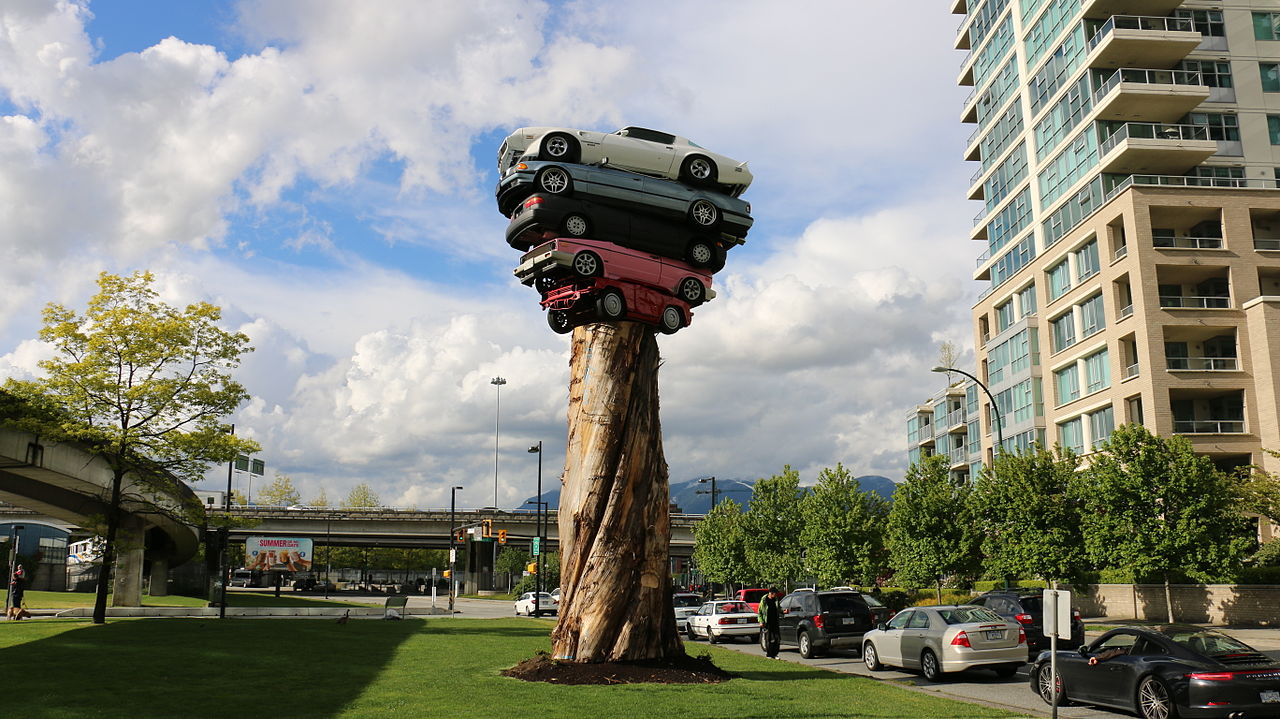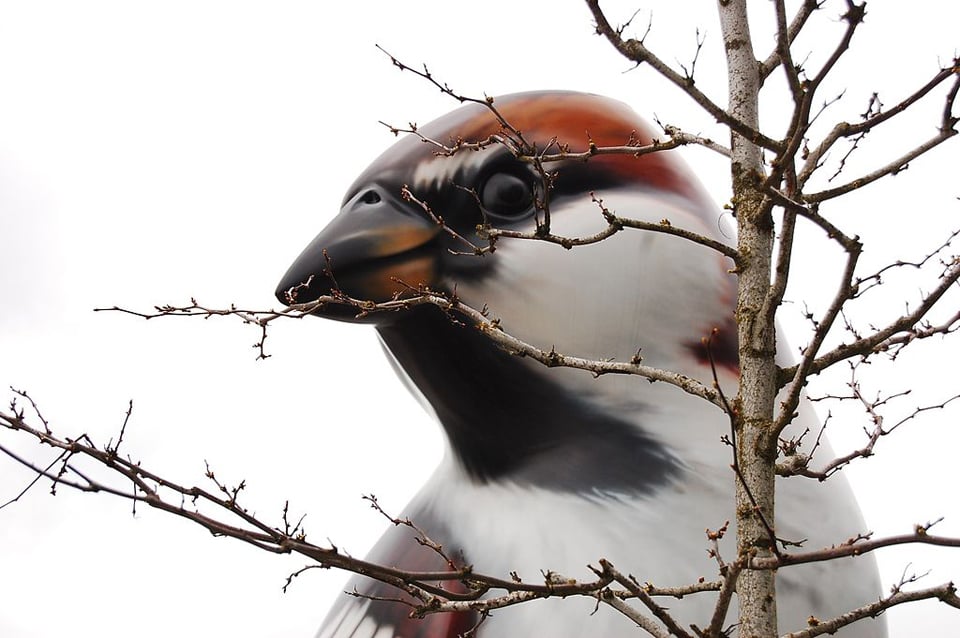Public art can soothe, annoy, confuse, or give us a shot of beauty on a dreary day.
But does public art also have the power to inspire, and change our minds? Can it change society?
For many years the City of Vancouver has been encouraging more public art around the city. Developers of large projects are required to make a contribution to the city for public art (an actual work or cash-in-lieu).
The non-profit Vancouver Biennale has also been pivotal in bringing art to the city’s public spaces and in inviting artists from around the world to create public installations and social interventions.
Sprinkled among these are works of ecological art.
Ecological art developed along with the growing awareness of environmental issues and the accompanying rise of the environmental movement. The stance taken by an artist who creates these works may range from that of a passive observer to that of an active interventionist, though typically there is a recognition that the world is interrelated and that actions in one part of the world impact ecosystems in other parts.
These artists often work in collaboration with others, including scientists, engineers, urban planners, students, community members, and activists. In engaging the natural world they raise questions about environmental issues, but do not provide definitive answers.
There is often a critical political slant.
‘The Birds’
While Myfanwy MacLeod’s oversized sparrows at Olympic Village could be construed to be just two extremely large birds (5.5-metres high), the artist’s intent is more ominous. Since being introduced to North America by English settlers in the 1800s, sparrows have become so commonplace that they have driven out many native species and wreaked havoc on local ecosystems. Parallel to this is the impact of colonialists on the lives of indigenous peoples. The sparrows’ prominent size is intended to make a visual statement about this impact.

‘Trans Am Totem’
Surrounded by cars zooming off the viaducts and along Quebec Street, it is difficult to miss Marcus Bowcott’s Trans Am Totem. Standing 10 metres high, it is made up of five Trans Am cars stacked on top of an old growth cedar trunk. The sculpture is a comment on our “out with the old, in with the new” consumer society and on the present threat of global warming. It reminds us of the unique position of the car in our culture, while perhaps also allowing us to dream about the car’s demise.
‘A False Creek’
The painted stripes on the pilings of the Cambie Bridge were created by Rhonda Weppler and Trevor Mahovsky to mark the midpoint of the anticipated five-metre rise in sea levels that will occur with the melting of the Earth’s major ice sheets.
While for the people walking or cycling by the stripes at first appear to be purely decorative, their appearance becomes ambiguous when the true purpose of the design is understood. Seen in relation to the scale of False Creek and the Cambie Bridge, the scale of looming environmental change is visually and physically unequivocal.
‘Hillcrest Geyser’
This 4.5-metre geyser created by Vanessa Kwan and Erica Stocking is an integral part of the recreational facilities in Hillcrest Park. It is an artwork that combines oral and geological histories about local underground streams, the maintenance requirements of the centre’s facilities, and environmental concerns. The geyser is part of a cycle in which water is brought into the facility’s cistern and is activated by the water pressure. By operating as a fountain without wasting water or needing a water recycling system, the artwork becomes part of the facility’s overall environmental strategy.
Pause and think
These works of art may (or may not) draw our attention as we drive, walk, or cycle by. They can make us look at our immediate surroundings and our world in a new way, educate us about local and global environmental concerns, and possibly even inspire us to make changes.
We also find examples of ecological art in the work of diverse grassroots groups operating around the city and region. Their projects are typically grounded in place and can be something as simple and under-the-radar as seed-bombing expeditions, guerrilla gardening, or yarn-bombing.
Hopefully the city is thinking of incorporating some ecological art into the design of the new Arbutus Greenway. After all, the city has said that the Greenway will be Vancouver’s answer to the New York High Line, and the High Line is renowned for its ongoing art installations. In addition to including the work of more established artists, the actions of groups of citizens could be encouraged. One idea: a project that connects the unequal distribution of greenways between the city’s east and west sides to the fact that the impacts of climate change are unequally tilted against the world’s impoverished areas. And another: an installation that commemorates the life and death of a community garden plot.
Art cannot on its own change the world. But as many people think that environmental stresses will be the principal cause of major conflicts this century, the artists who deal with these issues are now at the vanguard of art practices and at the centre of society and life. Let’s encourage the artists.
Let’s put more public art all over this city. ![]()
Read more: Urban Planning + Architecture















Tyee Commenting Guidelines
Comments that violate guidelines risk being deleted, and violations may result in a temporary or permanent user ban. Maintain the spirit of good conversation to stay in the discussion.
*Please note The Tyee is not a forum for spreading misinformation about COVID-19, denying its existence or minimizing its risk to public health.
Do:
Do not: